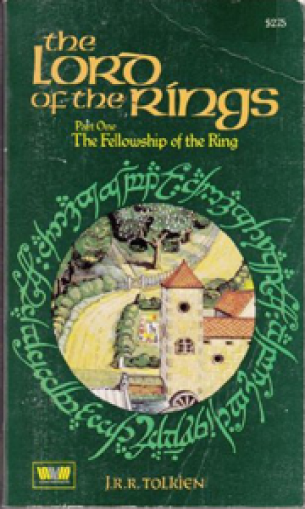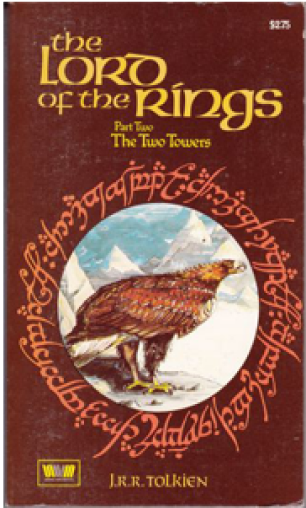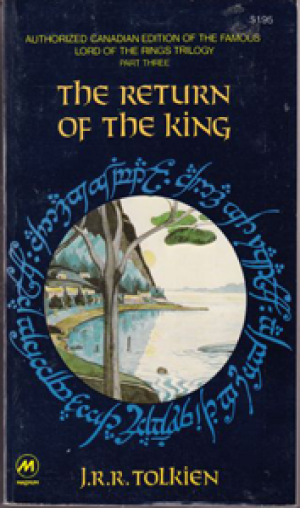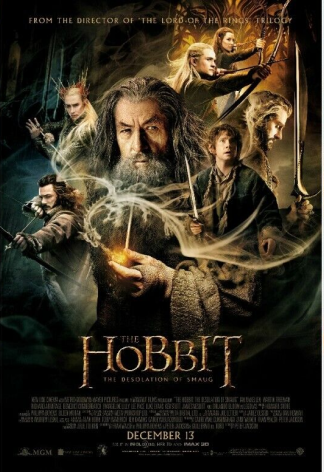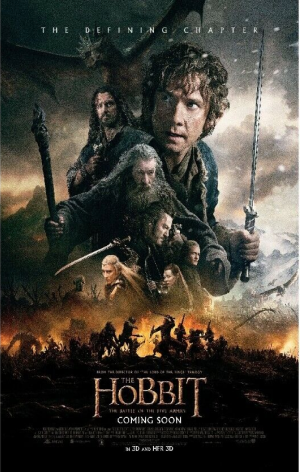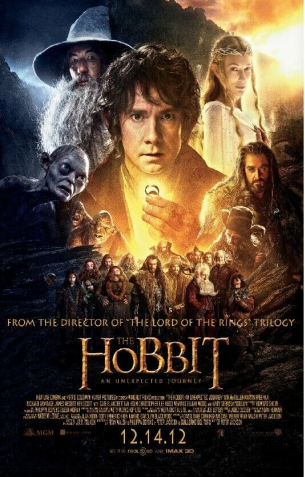

The Hobbit, or There and Back Again is a children's fantasy novel by English author J. R. R. Tolkien. It was published in 1937 to wide critical acclaim, being nominated for the Carnegie Medal and awarded a prize from the New York Herald Tribune for best juvenile fiction. The book is recognized as a classic in children's literature, and is one of the best-selling books of all time with over 100 million copies sold.
The Hobbit is set in Middle-earth and follows home-loving Bilbo Baggins, the hobbit of the title, who joins the wizard Gandalf and thirteen dwarves that make up Thorin Oakenshield's Company, on a quest to reclaim the dwarves' home and treasure from the dragon Smaug. Bilbo's journey takes him from his peaceful rural surroundings into more sinister territory.
The story is told in the form of an episodic quest, and most chapters introduce a specific creature or type of creature of Tolkien's geography. Bilbo gains a new level of maturity, competence, and wisdom by accepting the disreputable, romantic, fey, and adventurous sides of his nature and applying his wits and common sense. The story reaches its climax in the Battle of Five Armies, where many of the characters and creaturesfrom earlier chapters re-emerge to engage in conflict. Personal growth and forms of heroism are central themes of the story, along with motifs of warfare. These themes have led critics to view Tolkien's own experiences during World War I as instrumental in shaping the story. The author's scholarly knowledge of Germanic philology and interest in mythology and fairy tales are often noted as influences.
The publisher was encouraged by the book's critical and financial success and, therefore, requested a sequel. As Tolkien's work progressed on its successor, The Lord of the Rings, he made retrospective accommodations for it in The Hobbit. These few but significant changes were integrated into the second edition. Further editions followed with minor emendations, including those reflecting Tolkien's changing concept of the world into which Bilbo stumbled. The work has never been out of print. Its ongoing legacy encompasses many adaptations for stage, screen, radio, board games, and video games. Several of these adaptations have received critical recognition on their own merits.
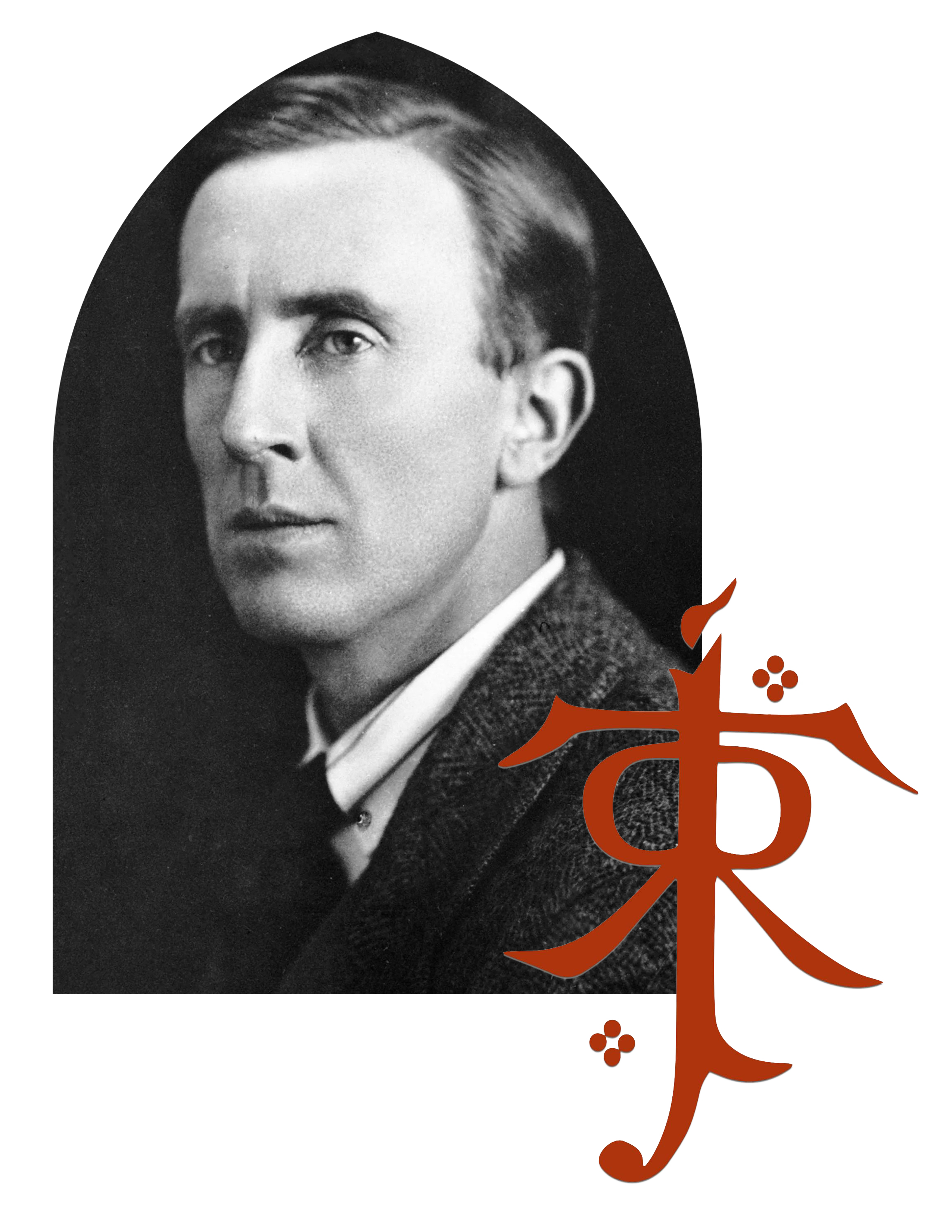
John Ronald Reuel Tolkien (3 January 1892 – 2 September 1973) was an English writer and philologist. He was the author of the high fantasy works The Hobbit and The Lord of the Rings.
From 1925 to 1945, Tolkien was the Rawlinson and Bosworth Professor of Anglo-Saxon and a Fellow of Pembroke College, both at the University of Oxford. He then moved within the same university to become the Merton Professor of English Language and Literature and Fellow of Merton College, and held these positions from 1945 until his retirement in 1959. Tolkien was a close friend of C. S. Lewis, a co-member of the informal literary discussion group The Inklings. He was appointed a Commander of the Order of the British Empire by Queen Elizabeth II on 28 March 1972.
After Tolkien's death, his son Christopher published a series of works based on his father's extensive notes and unpublished manuscripts, including The Silmarillion. These, together with The Hobbit and The Lord of the Rings, form a connected body of tales, poems, fictional histories, invented languages, and literary essays about a fantasy world called Arda and, within it, Middle-earth. Between 1951 and 1955, Tolkien applied the term legendarium to the larger part of these writings.While many other authors had published works of fantasy before Tolkien, the great success of The Hobbit and The Lord of the Rings led directly to a popular resurgence of the genre. This has caused him to be popularly identified as the "father" of modern fantasy literature—or, more precisely, of high fantasy.
